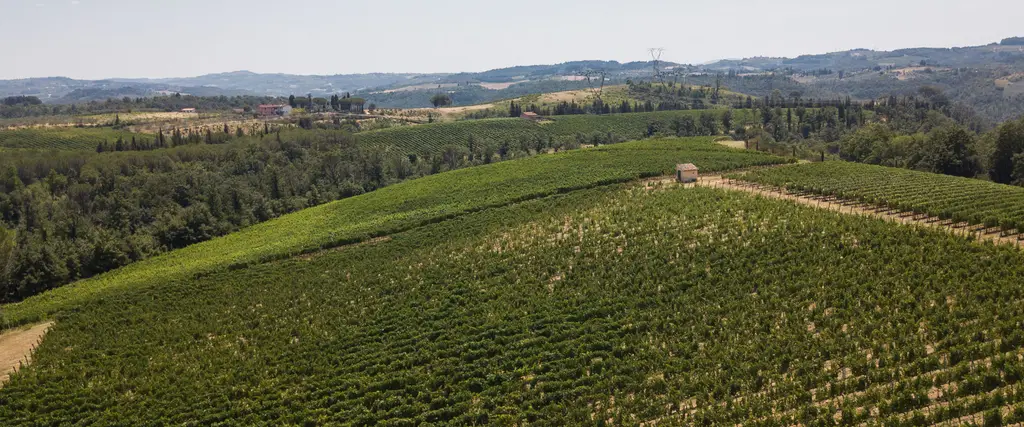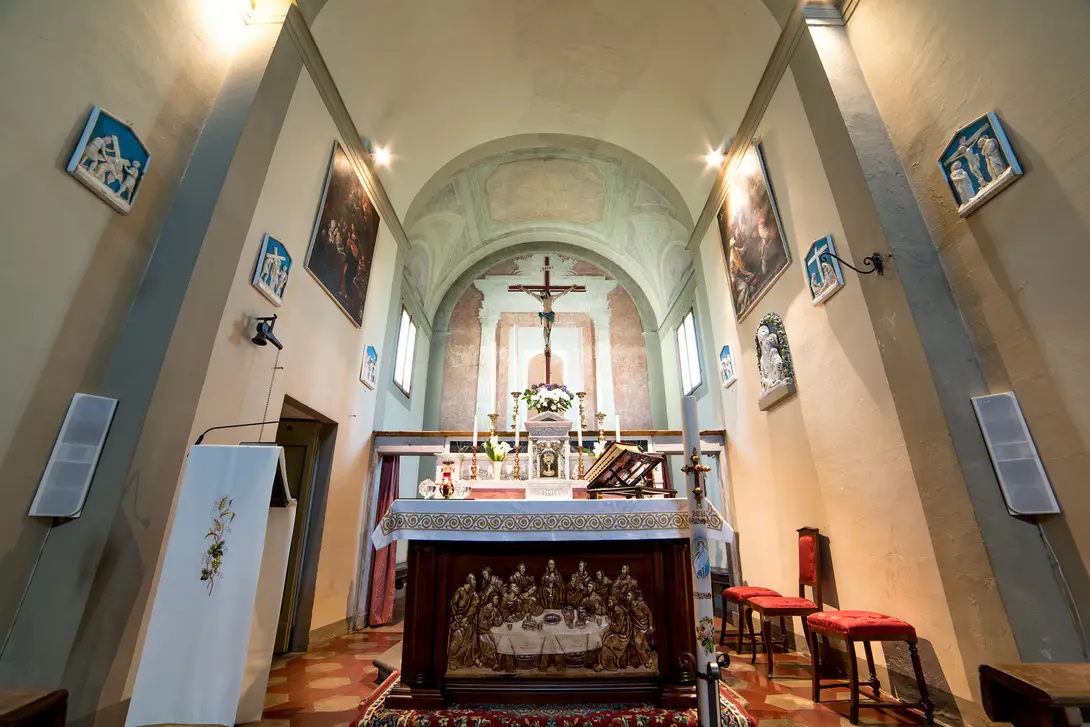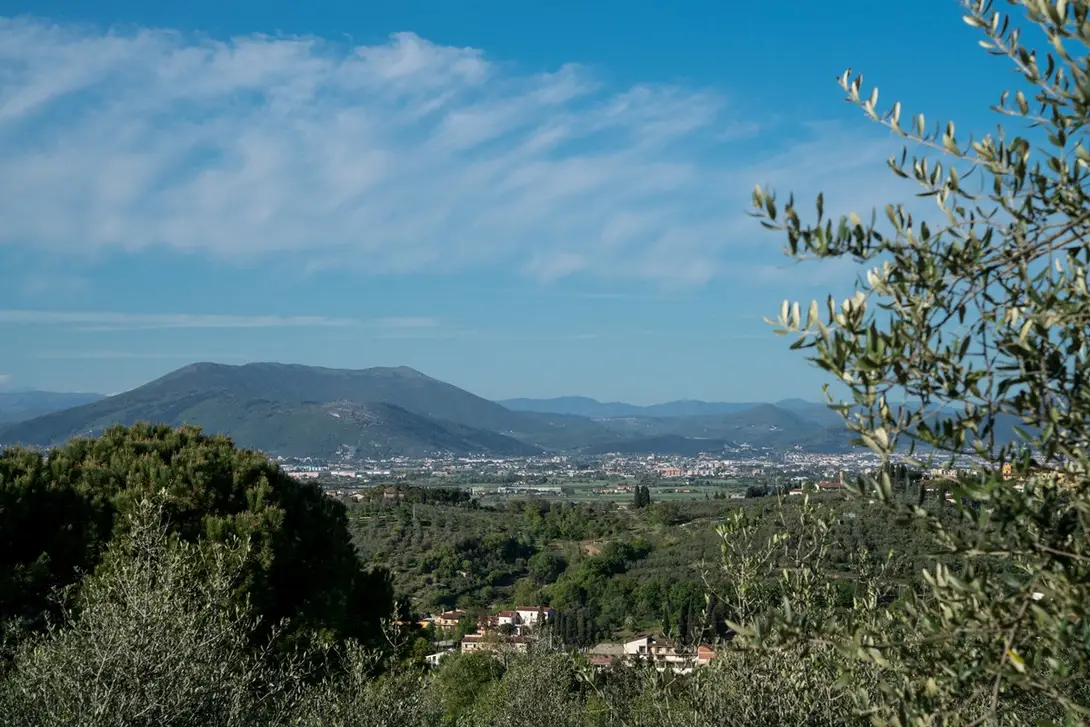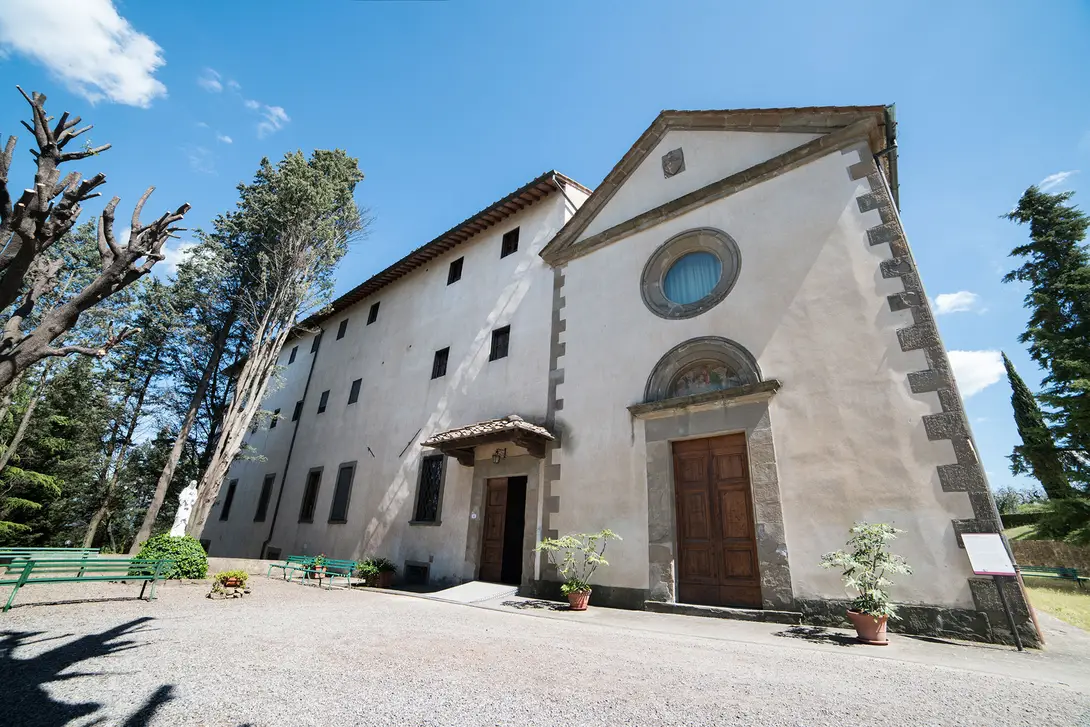
The hills of Lastra a Signa
A ring route on the hills south of Lastra a Signa, that allows you to linger over some of the oldest churches of the Lastra area while reaching the hamlet of Malmantile, with its 15th century walls.
From the church of Santa Maria a Castagnolo you get to the Madonna of the Cough tabernacle, then proceed towards Poggio Vittorio, walking among vines and olive trees. After a wood you take via di San Romolo, up to the so-called Mulettino tabernacle, finally arriving to the church of San Romolo, from which you can enjoy the sweeping view on the whole surrounding area.
After going back on your tracks until you reach the cemetery, you take the paved road leading to Malmantile, worth stopping to discover the fortified castle.
Continuing the walk towards Lastra you go down the trail on the left in the direction of Le Sughere, passing near the Lecceto hermitage, with wonderful views up to the Monte Morello mountain.
Carrying on downhill you enter Lastra a Signa passing under the old city door, called Portone di Baccio.
Comune di Firenze
Étapes
Santa Maria a Castagnolo church
The Santa Maria a Castagnolo church is located in a secluded position as compared with the old town of Lastra a Signa, along the road leading to Sant’Ilario and San Romolo. Originally it stood near the Ponte di Stagno, but in the thirties of the 20th century it was moved to the place where it stands today.
A coat of arms, once placed on the facade and today kept in the Museo d'arte sacra di San Martino in Gangalandi, recalls the old patronage of the Albizi family.
Near the church, on the close by Via Madonna della Tosse, stands an 18th century tabernacle, built around a late 14th century fresco, portraying the Madonna with Child and Saints.
San Romolo a Settimo church
From the church of San Romolo a Settimo, that rises up on the highest elevation of the Lastra a Signa area, you can enjoy a sweeping view from the Apennines to Florence, down to the Sienese hills. It appears that around the year 1000 there was a hermitage of monks of the Badia a Settimo in the village of San Romolo, but the first documents that provide evidence of a religious building's existence in this place date back to 1200.
A recent restoration has brought to light, under the 16th century portico, the ancient Romanesque period stonework. In the 18th century, instead, the quadrangular apse was added, as the date (1710) etched on the step at the entrance implies: originally the church indeed had a simple rectangular plan, ending with a semi-round apse, a common feature in medieval rural parish churches.
Inside, one of the altars used to house the painting portraying the Madonna of Humility by Lorenzo Monaco, now kept in the Museo di San Martino a Gangalandi.
Malmantile walls
The medieval castle of Malmantile, a hamlet of Lastra a Signa, nestled on a wonderful hillside, stands as a quite unique monument, that has retained the whole perimeter of the city wall.
The castle was built at the beginning of the 15th century, at the same time as the walls of Lastra a Signa in 1397. Unlike Lastra, the walls of Malmantile were not built to enclose a town, but in response to defensive needs.
After the fall of the Florentine Republic in 1530, the fortified axis of the Via Pisana started losing its importance and in the second half of the 18th century a new stretch of road between Montelupo and Porto di Mezzo was opened. Therefore Malmantile remained isolated, preserving over the centuries its rectangular city wall on top of a hill.
The walls, built on the rocky subsoil, have an irregular plan, with square-based donjons. On the side facing Pisa you can still see many of the integral elements, such as the square machicolations from which, in case of an attack, the defenders could drop blunt objects or boiling liquids on the assailants attempting the climb.
Lecceto hermitage
The convent of Lecceto is located in Malmantile, a hamlet of Lastra a Signa and it was born as a hermitage, founded in 1473 by the Dominican friar Domenico Guerrucci, and generously funded by the Florentine Filippo Strozzi, whose coat of arms can be seen in various areas of the church and convent. The hermitage is found at the end of a cypress-lined avenue, along a very ancient road that leads from Gangalandi to the Lamole church.
Originally restricted to a part of the present ground floor and first floor, it was suppressed in 1810 and reduced to a household. In 1875 it was bought by the archbishop of Florence, Eugenio Cecconi, who restored it and enlarged it to be used as a summer residence of the major Seminary. During the Seventies the convent underwent a considerable overhaul and today it is the seat of a spiritual retreat.
The church of Lecceto represents one of the purest examples of late 15th century architecture in the Florentine county; at the behest of Filippo Strozzi it was decorated with wooden and marble artefacts by Benedetto da Maiano and with an altarpiece by Domenico Ghirlandaio, works that disappeared later in the 19th century. The high altar houses a painting, dating back to about 1480, whose central part is the work of Neri di Bicci, who intervened on a 14th century painting.
Portone di Baccio
Along the south-west section of the old defensive wall of Lastra a Signa, stands the Portone di Baccio, the defensive structure and town gate along the road running from north to south inside the fortified hamlet.
The Portone di Baccio was the main access to the village, the most imposing and austere door, with a perfect geometrical shape and with a height reaching 22,30 metres.
Over the centuries the structure has underwent several transformations: born as a watchtower, in the 18th century it was used as a prison.
The door is the best preserved one among the ones of the city, even though the inner front is missing; after the last restoration, in 2008, it stands today in all its grandeur and welcomes visitors who enter the old town of Lastra.




